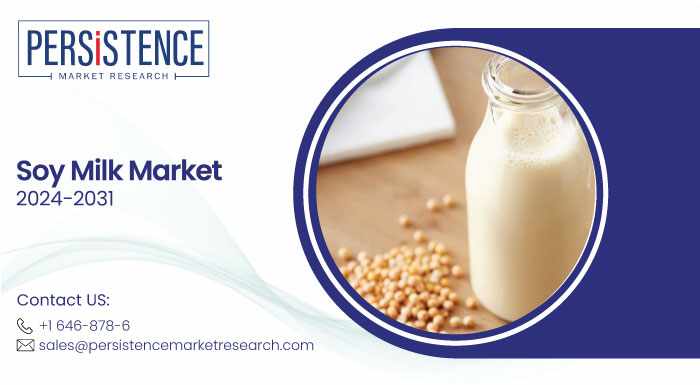
The dried fruits market is undergoing a significant transformation, evolving from a simple snack category to a vital component of the global superfoods industry. With rising health awareness, changing consumer preferences, and growing demand for natural, nutritious alternatives to traditional snacks, dried fruits have increasingly become a staple in households and diets around the world. This blog delves into the journey of dried fruits from a snack to a superfood, examining the key factors driving their growth and their role in the broader health food market.
Read More: https://www.persistencemarketresearch.com/market-research/dried-fruits-market.asp
A Rising Health-Conscious Trend
In recent years, there has been a noticeable shift toward healthier eating habits, with more consumers opting for snacks and ingredients that are both nutritious and natural. This shift has been fueled by increasing awareness of the health risks associated with processed foods, artificial additives, and excessive sugar consumption. As a result, dried fruits, known for their natural sweetness, high fiber content, and concentration of essential vitamins and minerals, have risen to prominence.
Dried fruits, such as raisins, apricots, figs, and cranberries, offer numerous health benefits, making them a powerful addition to a balanced diet. They are rich in antioxidants, vitamins like vitamin C and A, and minerals such as potassium and iron. These nutritional benefits have led many health-conscious individuals to embrace dried fruits as a nutritious alternative to sugar-laden snacks, positioning them as a growing segment within the larger superfoods category.
From Snacks to Superfoods
Historically, dried fruits were primarily viewed as convenient, on-the-go snacks, but their growing reputation as a superfood has significantly expanded their market appeal. A superfood is generally considered a food that is nutrient-dense and packed with beneficial compounds that have a positive impact on overall health. Dried fruits now fit this bill perfectly, as they provide a concentrated source of nutrients while being rich in dietary fiber, antioxidants, and heart-healthy compounds.
Nutritional Benefits of Dried Fruits as Superfoods:
High Antioxidant Content: Dried fruits like raisins, prunes, and figs are rich in antioxidants, which help fight oxidative stress and reduce inflammation in the body. These antioxidants play a key role in boosting immunity and protecting against chronic diseases.
Rich in Fiber: The drying process intensifies the fiber content of fruits, making them a fantastic option for digestive health. Fiber helps regulate bowel movements, maintain healthy cholesterol levels, and manage blood sugar.
Vitamins and Minerals: Dried fruits are an excellent source of essential vitamins and minerals. For example, dried apricots are packed with vitamin A, which is vital for eye health, while dried figs are high in iron, which is crucial for preventing anemia.
Heart-Healthy: Many dried fruits, especially those with high potassium content, like apricots and prunes, support heart health by helping to regulate blood pressure and reduce the risk of cardiovascular diseases.
Changing Consumer Preferences
The dried fruits market's rapid growth is closely tied to changing consumer behavior. People are becoming more selective about their food choices, favoring products that are organic, clean-label, and minimally processed. This demand for transparency and healthier options has led to an increase in the availability of premium dried fruit products that highlight their nutritional profiles and minimal additives.
In addition to individual consumers, dried fruits have found their way into various food categories, including smoothies, salads, energy bars, breakfast cereals, and even gourmet products. The versatility of dried fruits is making them an attractive ingredient for food manufacturers and chefs alike. By incorporating dried fruits into various meal options, consumers are easily able to boost their daily nutrient intake.
The Appeal of Plant-Based Foods
With the rise of plant-based diets, dried fruits have become a cornerstone of vegan, vegetarian, and flexitarian eating plans. As more people choose to reduce their meat consumption for health, ethical, or environmental reasons, plant-based foods are seeing significant demand. Dried fruits align perfectly with this shift, offering a vegan-friendly, nutrient-rich alternative to animal-based snacks.
Additionally, the growing popularity of plant-based snacks has encouraged innovations in dried fruit offerings. Manufacturers are combining dried fruits with other plant-based ingredients, such as nuts, seeds, and plant proteins, to create nutrient-packed snack bars and blends that cater to the modern, health-conscious consumer.
Sustainable and Convenient
Another key driver of the dried fruits market’s growth is their sustainability and convenience. Dried fruits are more shelf-stable than fresh fruits, making them a practical choice for both consumers and food manufacturers. Their long shelf life reduces food waste, contributing to more sustainable food systems. Dried fruits also require little to no preparation, making them an easy snack or addition to meals.
Many consumers are also turning to dried fruits as part of the broader trend of reducing food waste. By drying excess fruits, manufacturers extend their shelf life and reduce the amount of food that goes to waste. This aligns with the growing trend of sustainability, where consumers are increasingly concerned with the environmental impact of their food choices.
Growing Popularity in the Global Market
The demand for dried fruits is expanding beyond traditional markets in North America and Europe. Emerging economies in Asia-Pacific, Latin America, and the Middle East are witnessing an increasing appetite for healthy snacks, and dried fruits are quickly becoming a preferred option. The rise in disposable incomes, urbanization, and awareness of healthier eating habits in these regions are contributing factors.
In these regions, dried fruits are often used as ingredients in traditional recipes, but there is also a growing demand for ready-to-eat dried fruit products. This offers new opportunities for producers to innovate and tap into a larger consumer base.
The Role of Innovation in Market Growth
Innovation in the dried fruits market is key to its expansion. Brands are introducing new flavors, combinations, and formats to keep pace with evolving consumer preferences. For instance, dried fruit snacks are being paired with nuts, seeds, and superfoods like chia or quinoa to create nutrient-dense snack options that appeal to busy consumers. This product diversification is helping dried fruits to transition from a niche food item to a mainstream ingredient in healthy eating habits.
Additionally, the development of organic and fair-trade dried fruit products is meeting the demand for clean-label and ethically sourced foods. Consumers are increasingly looking for products that align with their values, and brands are responding by offering dried fruit options that are sustainably sourced and produced.
Conclusion
The dried fruits market’s journey from snacks to superfoods highlights a broader trend in the food industry toward health-conscious, nutrient-dense options. Dried fruits are no longer just a quick snack; they have become an integral part of a healthy, balanced diet, offering a range of health benefits that appeal to modern consumers. As more people embrace plant-based eating, sustainability, and clean-label products, dried fruits will continue to flourish as a key player in the global food market. With innovation, convenience, and nutritional benefits driving growth, the future of the dried fruits market looks incredibly promising.




















Write a comment ...